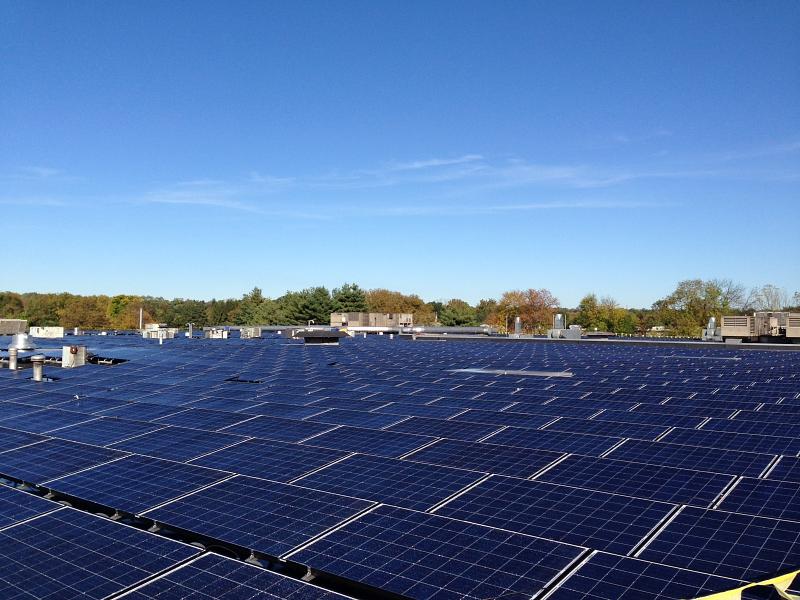As utilities continue to put their collective heads together on how to best approach the grid of the future, a bunch of advanced energy industry organizations are pointing to the New York’s Public Service Commission’s (PSC) “Reforming the Energy Vision” (REV) as a good place to start. The PSC just finished a phase of comment submissions on proposals to modify utility revenue and earnings models. The groups believe REV remains the nation’s most far-reaching initiative for modernizing the regulatory framework for electric utilities.
In a filing made on Monday on the Commission’s proposed plan to redefine the business model and compensation structure for electric utilities in the state, the Advanced Energy Economy Institute, AEE’s nonprofit educational affiliate, and the Alliance for Clean Energy New York (ACE NY), and the Northeast Clean Energy Council (NECEC) endorsed the thrust of the PSC’s approach and submitted comments to help the Commission refine and accelerate implementation.
“New York is leading the way in modernizing our electricity system and empowering consumers,” said Lisa Frantzis, Senior Vice President, Advanced Energy Economy (AEE), a national business organization. “The innovative framework put forth by the PSC seeks to realign the way utilities make money in order to meet state policy priorities and offer exciting new options to customers for meeting their electricity needs flexibly, reliably, and affordably. Our comments strive to fine-tune the mechanisms that will deliver the value of distributed energy resources to households, businesses, and the New York economy.”
“This week was another important milestone in the REV process,” stated Anne Reynolds, Executive Director of the Alliance for Clean Energy New York (ACE NY). “We are optimistic that the REV framework, when put in place, will give utilities new financial incentives to encourage clean energy, like wind, solar, and fuel cells. Our comments address the details of getting to a world where renewable energy is blossoming and the utilities are helping to make that happen.”
RELATED: Three big bank transactions expand clean energy plans in New York
On July 28, the PSC issued its Staff White Paper on Ratemaking and Utility Business Models. That white paper proposed a framework and a market structure that would change how utilities are compensated. This framework would encourage private investment and development of customer-sited distributed energy resources (DER), like solar energy, wind, fuel cells, microgrids, energy storage, energy efficiency, and demand response.
Since utilities have traditionally earned profits by investing in capital assets, on which they earn a regulated rate of return, the proposed approach identifies new sources of revenue and earnings designed to encourage utilities to develop and operate the grid as a platform for distributed and third-party energy resources. The Staff White Paper proposes incentives for utilities to support customer investments in DER rather than make costly investments in traditional distribution system upgrades that would have to be paid by ratepayers. Over time, utilities would come to rely less on capital investments and more on revenue associated with managing the “distributed system platform” where customers can find the products and services they want from a range of non-utility companies.
“Advanced, innovative technologies to better distribute, manage and save energy already have a track-record in delivering results,” said Chris King, Global Chief Regulatory Officer-Digital Grid at Siemens. “This new market-based framework proposed by New York’s PSC will allow these services to flourish, saving customers money and improving our electricity system to meet future demands.”
“We applaud New York’s commitment to restructuring the electricity system to integrate more distributed energy technologies, like solar and battery storage,” said Howard Wenger, SunPower president, business units. “The state’s REV program is introducing innovative technology and services from third-party providers to meet the needs of all energy customers, from commercial and industrial to public and residential.”
RELATED: Study: What’s the actual cost for residential solar in New York?
In the comments filed on Monday, the advanced energy groups made a number of specific recommendations, including:
Move forward as expeditiously as possible with mechanisms that reward utilities for performance rather than capital investments, in order to motivate utility action related to DER deployment, customer engagement, access to data, and energy efficiency, with reasonable targets set as soon as 2016.
Implement market-based earnings for utilities gradually, so that they focus initially on facilitating and developing a robust market for DER, rather than potentially introducing products that compete with DER providers.
Develop more robust transition plans for utility energy efficiency programs to provide growth in energy savings aligned with state objectives.
Develop compensation mechanisms that value the full range of benefits of DER to the electricity system and to customers. Existing net metering compensation should be retained and extended to other technologies that do not receive compensation at full retail rates until a more comprehensive compensation system is in place.
Explore new rate designs that take advantage of advanced metering capabilities, such as time-varying rates, and focus on peak demand, but only implement them along with the tools and capabilities to manage demand; otherwise, billing based more on demand effectively amounts to an increase in fixed charges, which the groups do not support.
— Solar Builder magazine
[source: http://solarbuildermag.com/news/new-yorks-new-utility-approach-causes-industry-buzz/]

Leave a Reply
You must be logged in to post a comment.